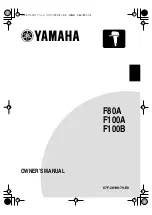
D E M O 9 S 1 2 X D T 5 1 2
J U L Y 1 8 , 2 0 0 8
12
The XCLKS* signal allows the user to configure the timing input as a full-power Pierce oscilla-
tor. Full power Pierce mode requires installing an 0805 size, 1M ohm resistor at location R9.
The XCLKS* jumper should be disabled when using an optional clock oscillator.
The CLK_SEL option header selects the on-board XTAL oscillator, the optional CLOCK oscil-
lator socket, or configures the MCU to accept a full-power Pierce Oscillator input as timing
source for the MCU. The figure below shows settings for CLK_SEL option header.
Figure 5. CLK_SEL Option Header
CLK_SEL
1
1
2
Select XTAL oscillator Y1 output (default)
3
4
Select Clock oscillator X1 output
5
6
Enable full-power Pierce input
3
NOTE
: When applying the Clock Oscillator (X1), do not enable XCLKS*
NOTE
: Enabling the full-power Pierce oscillator requires installing a 1M ohm resistor at location R9.
CAUTION:
On revision D or earlier boards, only a 3.0V output clock oscillator may be used. Using
a clock with 5.0V output will damage the MCU.
COMMUNICATIONS
The DEMO9S12XDT512 board provides two Enhanced Serial Communications Interface
(ESCI) ports. SCI0 is applied to RS-232 serial communications (COM) on the target board.
SCI1 is applied to LIN communications on the target board. RS-232 communications are sup-
ported through a DB9 connector. LIN communications are supported through a pair of 4-pin
Molex connectors.
RS-232
An RS-232 translator provides RS-232 to TTL/CMOS logic level translation on the COM con-
nector. The COM connector is a 9-pin Dsub, right-angle connector. A ferrite bead on shield
ground provides conducted immunity protection. Communication signals TXD and RXD are
routed from the transceiver to the MCU. Hardware flow control signals RTS and CTS are
available on the logic side of U3. These signals are routed to vias located near the transceiver
(U3). RTS has been biased properly to support 2-wire RS-232 communications.
Communications signals TXD and RXD also connect to general purpose Port S signals.
Table 4: COM Connections
MCU Port
COM Signal
I/O PORT
CONNECTOR
PS1/TXD
TXD OUT
J1-5
PS0/RXD
RXD IN
J1-7





































